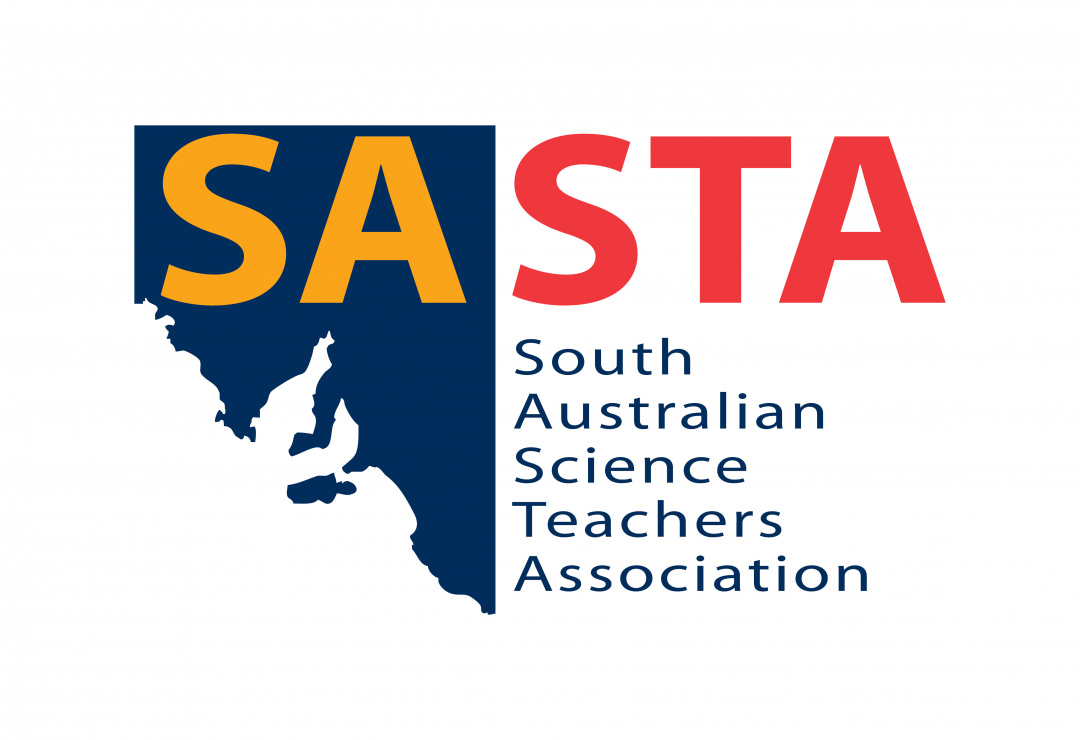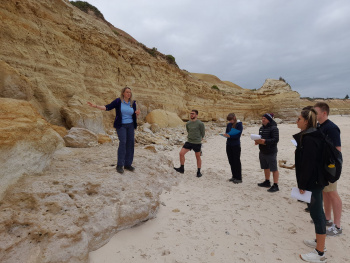
Posted by SASTA
on 15/04/2024

It is often the voice of students who boast “When will we ever use this information in the real world?”. As educators, our job is to prepare our students with the knowledge and skills they will need in the real world. What they actually need in the real world, however, can vary depending on what that student ends up doing with their life. We do know, though, that there are some underlying knowledge and skills that we believe all students should be equipped with when they leave our classrooms.
I have worked with the organisation, Geoscience Pathways Project, for the last decade to help spread knowledge of the world of Geoscience to students. Now, you might ask (like our students) but what purpose does this have in the real world? To which I reply, do you live on the Earth? The entire population relies on the services and resources that our planet provides us. It gives us with the food and drink on our table and the materials we use to shelter us from the harsh environment and any material form of entertainment comes from the rocks the earth is made of. Whilst the earth can live without us and has done so for the last 4.6 billion years, we cannot live without the earth.
It is hard to be on any social platform and not hear the words “climate crisis”. Mission Australia’s 2023 Youth Survey, which included 19,501 young people ages 15-19, rated the environment (at 44% compared to 51% in 2022 and 38% in 2021) as their top concern. Of that 44%, 21% of young people were personally extremely or very concerned about climate change. You then might ask, what role can we, as educators, play in preparing our students for the real world of climate change?
This has been our goal to, at the very least, create students who are informed citizens of the issues they will face when they go out into the real world. In an age of fake news and misinformation, it is difficult for the average person to navigate through all the information presented to us on the internet. Furthermore, as just one person, one can often feel like any action one does take might not make a difference in the grand scheme of things.
The Stage 1 and 2 Earth and Environmental Science subject explores how humanity uses the planet's resources and the issues that we will face as we move further towards 2100. We discuss the issues surrounding climate change and sustainability with a focus on solutions that society is already or can embrace but also solutions that any individual can do to make a difference in the world. Anne Marie Bonnaeu said it best by stating “We don't need a handful of people doing zero waste perfectly. We need millions of people doing it imperfectly.” There are everyday choices we can make in our lives that have a positive outcome on the environment at large but we need someone to show us how to do it, which is where we come in as educators.
I truly believe it is not too late to turn the tide on climate change. It is possible through the effort of every person on this planet, no matter how small or large that action may be. If this article has inspired you to take up Earth and Environmental Science at your school, please contact me at ksharrad@gmail.com. My role, as Geoscience Outreach Officer, is to support new schools who want to run this subject by providing them everything, and I mean everything, required to teach the subject at no cost. To learn more about what some of the schools we are already supporting are doing, please visit our website www.geosciencepathways.org.au.
Kelly Sharrad
Geoscience Outreach Officer
Geoscience Pathways Project

My name is Kelly Sharrad and I have been teaching Earth and Environmental Science since co-writing the SACE version of this subject back in 2017. I have also worked for the not-for-profit organisation Geoscience Pathways Project since 2015, which is passionate about engaging teachers and students in knowledge and careers within the realm of geoscience.
In this Section
Archive
- July 2025
- June 2025
- May 2025
- April 2025
- March 2025
- February 2025
- January 2025
- December 2024
- November 2024
- October 2024
- September 2024
- August 2024
- July 2024
- June 2024
- May 2024
- April 2024
- March 2024
- February 2024
- December 2023
- November 2023
- October 2023
- September 2023
- July 2023
- June 2023
- May 2023
- April 2023
- March 2023
- February 2023
- January 2023
- December 2022
- November 2022
- October 2022
- August 2022
- July 2022
- June 2022
- May 2022
- April 2022
- March 2022
- February 2022
- January 2022
- December 2021
- November 2021
- October 2021
- September 2021
- August 2021
- July 2021
- June 2021
- May 2021
- April 2021
- March 2021
- February 2021
- January 2021
- December 2020
- November 2020
- October 2020
- September 2020
- August 2020
- July 2020
- June 2020
- May 2020
- April 2020
- October 2018
- September 2018
- August 2018
- July 2018
